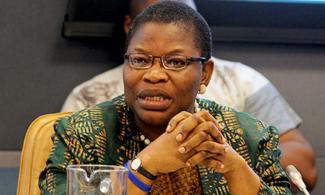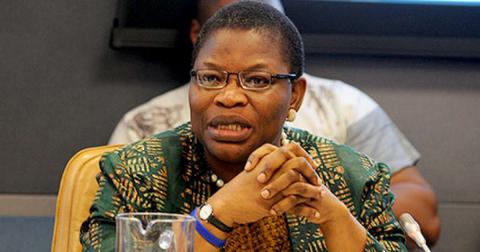
“I say part of the culture we must have as citizens is to say that whenever figures show up, we must interrogate them,” she said. “We need to have to interrogate data, otherwise they will be part of the political rascality of not wanting to be accountable to the society.”

Obiageli Ezekwesili, former Minister of Education and Convener of the Bring Back Our Girls (BBOG) movement, at the weekend took time out of organising protests for the release of kidnapped school girls in the Northeast to identify with her former boss Olusegun Obasanjo, in the rally of accusations between him and President Muhammadu Buhari.
At an event convened by Shehu Musa Yar’Adua Foundation’s Oil Revenue Tracking Initiative (ORTI), ‘Madam Due process’, as she was nicknamed, urged Nigerians to always interrogate data whenever figures are tossed around
“I say part of the culture we must have as citizens is to say that whenever figures show up, we must interrogate them,” she said. “We need to have to interrogate data, otherwise they will be part of the political rascality of not wanting to be accountable to the society.”
Delivering her presentation, Ezekwesili revealed that the Obasanjo regime spent $3.5billion on 10 National Integrated Power projects (NIPP), contrary to Buhari’s claim that the Obasanjo administration sunk $16 billion into power generation with no effect.
She said the fund for the power plants were sourced from the Excess Crude Accounts: “I do recall that even as Vice President at the World Bank, from what the Federal Government made available as at that time showed that as at 2007, $3.5billion had gone into these NIP projects.
“So, you have things like Papalanto, (the 676MW-capacity Olorunsogo II Power Plant built in Olorunsogo in Ogun State by SEPCO III Electric Power Construction Corporation of China); Geregu (the 434MW capacity Geregu II Power Station built in Ajaokuta, Kogi State, by Siemens Nigeria Limited); Alaoji (961MW-capacity Alaoji Power Plant built by Rockson Engineering in Abia State) and other power stations in at least 10 locations.
“It is from these projects that whatever power that anybody is generating today comes from.”
While hosting the support organisation championing his bid to return to power in 2019, Buhari had said a former Head of State spent over $16 billion on power, meanwhile the current government has to pay the debt even though there is nothing to show for the investment. Explaining the success of ECA, which was introduced under the Obasanjo government in 2004, Ezekwesili said the account provided the $12 billion Nigeria used to clear its foreign debt profile.
“People still argue whether it was sensible for us to spend that amount of money to take down the stock of our debt. But I need to tell you that it was a good thing that we took down the stock of our debt. It was an important thing to do because without taking down the stock of our debt, we were not going to be admitted into the global
financial system,” she said.
Using data on ECA from 2011, she observed that Nigeria could have saved more than it did by 2015: “The summary of the inflows and outflows from the account shows that the opening balance was $4.56 billion in 2011 and it reached a peak the following year at $8.7 billion, before declining to $2.3 billion in 2013. The balance as at May 2015 was $2.07 billion.”
She said the claim that the Obasanjo regime spent $15.5 billion from ECA might be faulty. A 2017 report by public finance advocacy firm BudgIT, titled ‘An analysis of Nigeria’s Economy and Vulnerability to Oil’, said ECA rose from N5.1 billion in 2005 to N20 billion in 2008. The rate of the naira to the dollar in 2007 was N120-125. Nigeria builds its budget based on funds from oil and gas. The budget is usually submitted to the National Assembly with a proposed price benchmark. If oil is sold higher than that assumed price, the excess revenue is saved in ECA.